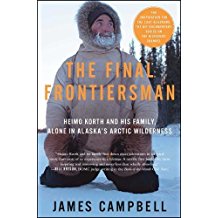To the Bright Edge of the World by Eowyn Ivey is a beautifully written historical novel based on an 1885 exploratory expedition to unmapped Alaska.
Lieutenant Colonel Allen Forrester and his wife Sophie have only been married a short time when he undertakes an assignment to explore regions of Alaska’s Wolverine River Valley. He is accompanied by two other Army men. Along the way they meet up with two trappers and prospectors hoping to locate minerals. A Native woman also joins them whose survival skills prove to be invaluable in their precarious journey.
Forrester’s team experiences harrowing, life-threatening situations, illness and deprivation. While her husband struggles in the wilds of Alaska, Sophie is compelled to remain at their home, an Army post at Vancouver Barracks, Washington Territory. Sophie has always been interested in nature, particularly birds, and discovers within herself a talent for wildlife photography while photography was in its infancy. She converts her pantry into a dark room and manages to learn the art of not only photography, but of developing pictures. Thus, she manages to ease her loneliness, despite the disdain of other army wives who spend their afternoons gossiping at teas.
The diaries and letters of Sophie and Allen Forrester are skillfully paced as they face hardships and conquests. Interspersed with Allen and Sophie’s writings is modern-day correspondence between a pharmacist and a great-nephew of Allen’s who is a curator of an Alaska museum. Also shown are excerpts and illustrations from historical documents which span the time period from the 1880s to the present.
To the Bright Edge of the World is an extraordinary novel, not only in its depiction of “man against nature,” but as a story of love, endurance, and hardships faced with courage and grace.



